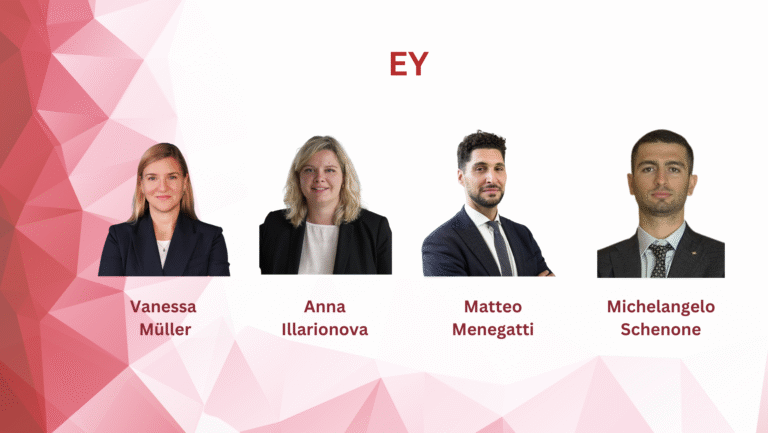Article by Francesca Messini, Arnaud Bon, Elodie Vandewoestyne, Jacopo Della Rocca from Deloitte
Since the 1990s, debt originators and managers have pioneered the introduction of Environmental, Social and Governance (ESG) principles in funding mechanisms. The debt market’s ESG activity was boosted by the issuance of the first green bond in 2008, guided by the Green Bond Principles (GBPs) framework. Green bonds are a clear example of a successful funding scheme to develop climate-related projects, and their implementation cleared the path for other ESG-linked funding structures.
Sustainable loans have emerged as a new lending option, mainly taking two forms: green or social loans to finance predetermined green or social projects, and sustainability linked loans that incentivize the borrower to achieve ambitious and predetermined sustainability performance objectives. The introduction of the GBPs in 2018 and the Sustainability Linked Loan Principles (SLLPs) in 2019 marked the birth of the first market frameworks to support sustainable loan agreements.
The emergence of sustainability linked loans
Compared with green or social loans, sustainability linked loans aim to promote the sustainable development of borrowers using Sustainability Performance Targets (SPTs) as Key Performance Indicators (KPIs) to measure borrowers’ sustainability profiles. These loans shift the focus from the borrower’s project to the borrower’s entire sustainability approach.
The SLLPs framework concentrates on four key elements:
- Communicating the overall sustainability strategy: borrowers should inform lenders of their sustainability objectives, achievements, and related alignment to the agreed SPTs.
- Measuring the borrower’s sustainability through setting targets: borrowers and lenders should set SPTs on an ad-hoc basis for each loan agreement.
- Reporting: transparency is critical to ESG reporting. Therefore, borrowers should report their SPTs, methodology and assumptions taken at least yearly.
- Reviewing: borrowers are strongly encouraged to seek external independent support to review their performance against set SPTs.
The SLLP framework’s introduction in 2019 drove the sustainability linked loan market to outperform green loan volumes in that same year.

Figure 1: Estimated green and sustainability linked loans supply in absolute numbers, from 2015 to October 2020 (source: Bloomberg, Nordea).
When looking at the differences between green loans and sustainability linked loans, a clear sectorial difference emerges.
Figure 2: Top five sectors application by loan format (source: The sustainable loan market: a snapshot of recent developments. E. Ramel; J. Michaelsen. Nordea publication. October 2020).
With 78% of all green loans issued across the renewable energy, power generation and utility sectors, green loans seem more suited to sectors with “green-by-nature” projects. However, sustainability linked loans are issued over a broader range of industries, emphasizing the possibility that any entity can improve its sustainability positioning. Compared with green loans, sustainability linked loans have been issued in industries like transportation and logistics, chemicals, and food and beverages—sectors that are not traditionally green and are aiming to reduce their environmental footprint and foster the transition to a low-carbon economy.
Setting ESG targets in private debt loan covenants
One sustainability linked loan requirement focuses on the entity’s ability to set sustainability objectives, which are measured through SPTs linked to the debt terms. Sustainability targets must be aligned with the borrower’s business, tied to a sustainability improvement, and monitored against a predetermined performance target benchmark or objective. SPTs may be either defined by the borrower’s global sustainability strategy or assessed by independent providers against external rating criteria.
Figure 3: Common categories of SPTs, with examples of improvements that an SPT may measure (source: “Sustainability Linked Loan Principles”. APLMA; LMA; LSTA, March 2019).
To foster these SPT commitments, the loan contract is often complemented by a so-called “ESG covenant”. This is an agreement between lenders and borrowers that defines the loan’s ESG terms and conditions to protect the lender’s financing position.
For example, lenders often rely on “margin ratchets”, which adjust the relevant loan agreement’s margin depending on a predetermined SPT threshold. This practice rewards borrowers for achieving SPTs through loan rate decreases and penalizes borrowers for not achieving SPTs through loan rate increases. By linking the loan terms to the borrower’s sustainability performance, borrowers are incentivized to improve their sustainability profile over the life of the loan. Typically, margins can increase or decrease within a range of 0 to 15 basis points (bps).
Although margin ratchets are currently the most widely used methodology, several other practices are emerging. For example, linking possible lender sanctions (e.g. early investment exit) to mandatory yearly ESG disclosures and goal achievements, requiring a more stringent level of commitment from borrowers as a result.
ESG-linked margin ratchets have appeared in several loan issuances across Europe, receiving strong support from leading alternative investors. In particular, The Carlyle Group has emerged as a front-runner in providing ESG-linked loans across a broad range of industries.
In 2019, The Carlyle Group acquired a minority interest in Jeanologia, a clean technology provider for denim manufacturing that aims to eliminate the use of water and avoid toxic waste. Jeanologia agreed to a loan with a margin linked to a water-saving SPT. The ratchet works bi-directionally— if Jeanologia meets its annual water-savings target by 15% or more a margin decrease is triggered. Otherwise, if the target is not met a margin increase is activated. The agreed SPT is a pre-existing KPI decided by its management team and communicated to The Carlyle Group on a yearly basis.
In 2020, The Carlyle Group announced the buyout acquisition of Flender from Siemens, launching an ESG-linked loan of around EUR1 billion. Flender is the market leader in supplying gearboxes for wind turbines outside China. The lender and borrower agreed to link a flexible margin ratchet based on the installed amount of wind power—if its wind power figures increase by 5% or more, Flender achieves a 10-bps margin reduction, and vice versa.
An example of a sustainability linked loan in the food and beverage industry is IK Investment’s acquisition of Kersia, a French company specializing in biosecurity services for the food value chain. Kersia’s financing package, with flexible margin ratchets of up to 7.5 bps, is linked to three SPTs: implementing systems for collecting and recycling customer packaging; increasing its green product share; and increasing the percentage of employees that are given the opportunity to become the firm’s shareholders.
While this mechanism strongly incentivizes borrowers to meet ESG-driven objectives, the excess margin applied when targets are missed counterintuitively improves the investment’s financial performance to the detriment of its ESG performance. At the limited partner level, where ESG strategy has become a key decision-driver for fund selection, receiving a better return due to poor ESG scoring would be counterproductive. Equally significant, manager performance remuneration should not improve where an asset’s ESG scoring is below the (ESG) target.
For this reason, some private debt lenders have started implementing mechanisms where increased performance is channeled into compensation schemes and/or non-profit organizations, and manager remuneration is partially based on portfolio ESG scoring.
Conclusion
Although sustainability linked loans are still in their infancy compared with other ESG-related funding mechanisms, their applicability and purpose are undeniable. Sustainability linked loan facilities are boosting sustainability adoption across several industries that are traditionally “brown” by nature.
Nevertheless, as of today, only a few large players in a very active industry have adopted sustainability linked loans, primarily relying on margin ratchet mechanisms. In compliance with local laws, lenders can use different techniques based on multiple and customizable KPIs tailored to the target company’s business. Despite this, one of the biggest challenges for alternative players remains the ability to engage, measure and control the implementation of ESG practices in a short-to-medium timeframe.
Sources:
“Finding leverage – how debt investors are tackling the challenge of ESG”. J. Bonsall; P. Kok; D. Mistler. ACA Group, March 2021.
“The sustainable loan market: a snapshot of recent developments”. E. Ramel; J. Michaelsen. Nordea publication. October 2020.
“Sustainability Linked Loan Principles”. APLMA; LMA; LSTA, March 2019.
“Are ESG margin ratchets saving the planet, or saving the borrowers money?” European Leveraged Finance Association Insights, April 2021.
“Sustainability linked loans”. Legal Briefings – by E. Beard; K. Roberts. Herbert Smith Freehills, February 2021.
“Jeanologia completes first sponsor-backed ESG-linked term loan”. S&P Global Market Intelligence, December 2019.
“Kersia outlines ESG-linked margin ratchet mechanism on senior loans”. S&P Global Market Intelligence, October 2020.
“Flender launches buyout loan package with new sustainability arranger titles”. S&P Global Market Intelligence, January 2021.






